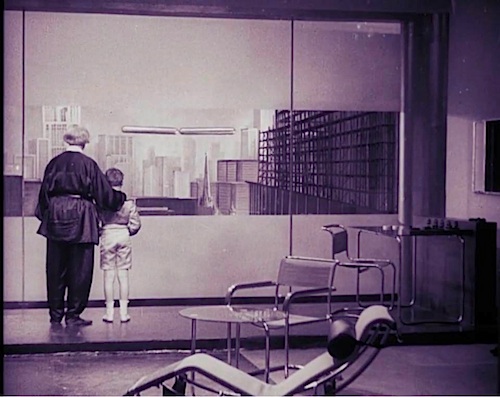By Joe Bendel. If Guy Maddin set out to adapt a ten year-old Wired magazine article, the result would probably look a lot like this, but the resulting film would not be so smugly assured of its insightfulness. That must be the difference between the Canadian and Austrian temperaments. Martin Reinhart, Thomas Tode, and Manu Luksch suggest our current digital era is only one of many successive information revolutions that constantly recalibrated the speed of Twentieth Century life. They will illustrate their point through the collage of rarely seen but suitably ironic early cinema clips that constitutes Dreams Rewired, opening this Wednesday at Film Forum.
So perhaps the more things change, the more they stay the same—or rather maybe the only constant is change? One of those is the general gist of Rewired. The trio of co-directors plus their fourth co-screenwriter Mukul Patel somewhat convincingly suggest the magnitude of innovation wrought by the internet and wireless communication is not so very different than societal transformation brought about by the telegraph, telephone, radio (the original wireless), and forms of moving pictures.
They probably have a point there, but they never really take it to a deeper level. Instead, the film is really more about the cascading images of retro-futurism and technological anxiety culled from the films of Thomas Edison, Alice Guy, Dziga Vertov, Carl Dreyer, Rene Clair, and Louis Feuillade. Both Chaplin and Keaton make cameo appearances, but probably the most readily identifiable clips come from Sergei Eisenstein’s Battleship Potemkin, which turned out not to reflect the future after all.

Throughout Rewired, the audience waits for Reinhart, Tode, Luksch, and Patel to step up their analysis, but it stays at the level of “look at how impressed people were with their televisions and switch boards.” As a result, the real reason for watching the docu-essay is the wild imagery they have assembled. If you want to see Teutonic men in tights and space helmets, this is film you have been waiting for. A game Tilda Swinton also plays along, narrating the repetitive thesis and sometimes providing archly anachronistic contemporary dialogue for some of the scenes the filmmakers incorporate.
If you enjoy retro-futuristic space opera, there are amusing bits and pieces in Rewired, but you are probably better off revisiting episodes of Tom Corbett, Space Cadet or classic films like Metropolis and Destination Moon (neither of which suited the purposes of Reinhart, etc., etc.). It sounds like brainy fun, but it really plays like an internet supercut. Problematically lightweight, Dreams Rewired is bound to leave viewers wanting more (of something, anything) when it opens this Wednesday (12/16) in New York, at Film Forum.
LFM GRADE: C+
Posted on December 16th, 2015 at 7:02pm.




